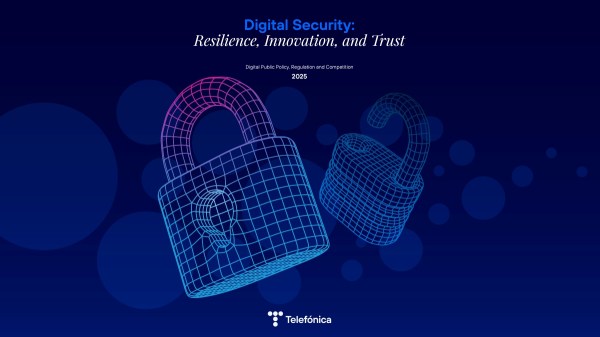The digitisation process in classrooms
Despite the importance that digitisation has gained in classrooms in recent years, the reality is that it is a process that began more than two decades ago. With the democratisation of computer use in homes and workplaces, educational institutions began to dedicate classrooms for computer use, known as ‘computer rooms’. Part of the academic activity shifted to these rooms, either for computer classes introducing basic digital skills or to complement lessons based on textbooks in other subjects.
The pandemic marked a turning point in the speed of classroom digitisation. Despite having a range of digital tools and resources at their disposal, many educational institutions struggled to move all their activities online. This wake-up call led to the implementation of various classroom digitisation plans aimed at teachers and students to provide them with digital training and teach them how to use new technologies.
In a short time, digitisation went from being moderately present in minors´ lives – essentially in their social interactions and certain academic lessons – to being actively present at all levels of their development. The lack of progression and support in this change has created various challenges, with the de-digitisation of classrooms now a topic at the centre of debate.
When talking about de-digitising classrooms, it is important to separate the debate on the use of personal devices (should personal mobile devices be brought to school?) from the debate on the use of digital devices in the teaching process (should tablets be used instead of textbooks? Should screens be used in educational activities?).
When we talk about de-digitising classrooms, we are not referring to the second of these points. Bringing personal mobile devices to schools is a different debate that we will not address in this article.
The risks of digitising classrooms
Two of the most commonly used arguments for the de-digitisation of classrooms are the impact on concentration and the decline in student learning effort.
The use of digital devices can have an impact on student concentration. Disconnection from lessons by students is a risk that has always existed. In the past, this abstraction was through the imagination; getting lost in the world of thoughts, writing notes to classmates or drawing in notebooks. Now this risk is seen as something more tangible associated with the digital world.
On the other hand, easy access to content and various generative artificial intelligence platforms means that students do not spend as much time searching for and selecting information. However, instead of facing this new reality by reverting to analogue, it should be seen as yet another transformation in our history. In this context, the most promising strategy would be to adopt a new educational approach that strengthens human skills, such as creativity and critical thinking, which will enhance the results that technology can offer.
The risks of slowing down the digitisation of classrooms
The de-digitisation of classrooms can have implications for both the future of new generations and competitiveness. Three main risks stand out: a reduced development of digital skills, a decline in future innovation, and a widening gap between students with higher and lower purchasing power.
Limiting access to digital tools and services in schools not only affects students’ immediate learning but also restricts their exposure to both soft digital skills such as responsible technology use and hard skills, like proficiency in new technologies and software. Without consistent guidance from educational institutions, students may miss crucial opportunities to build digital literacy.
Furthermore, a lack of contact with technology and of updates on new developments in the digital age can lead to less innovation. In this sense, students would be unaware of key case studies that would allow them to open their minds and explore the world of possibilities offered by technology.
Finally, de-digitisation would not be addressed uniformly in all educational centres. Therefore, the two aforementioned consequences of de-digitisation in classrooms could widen the socio-economic gap.
How can technology be effectively incorporated into the classroom?
The following points should be considered when introducing digital devices and services in classrooms:
- Encourage responsible use of technology. The academic programme should include lessons aimed at acquiring ‘hard’ and “soft” digital skills, with the concept of responsible use being part of the ‘soft’ digital skills curriculum.
- Introduce digital devices and applications with pedagogical intentions in their design. The technologies that are implemented in classrooms should be designed considering their use by minors in the classroom, incorporating only those functionalities that allow them to develop at an academic level.
- Achieve a balance between traditional analogue methods and digitisation. The benefits and possibilities offered by digitisation are not a reason to dismiss effective traditional methods that contribute positively to the acquisition of new knowledge by students. That is why lessons should be planned considering both analogue and digital options.
The digitisation of classrooms cannot simply consist of introducing digital devices and applications; it is a change in teaching and learning methodology that opens the door to new opportunities, experiences and ideas.
At Telefónica, we have been committed to this transformation for years, always aware that it must be carried out sensibly, progressively and effectively, taking into account the risks of misuse that minors may face in the digital environment.







